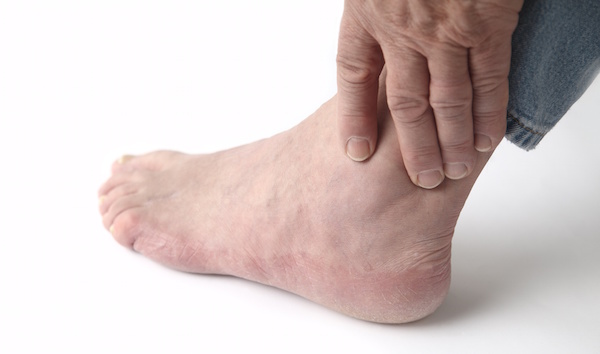
MONDAY, Nov. 1 (HealthDay News) — Pain is a commonly reported symptom during the last few years of life, with reports of pain increasing during the final few months, a new study has shown.
Just over a fourth of people reported being “troubled” by moderate or severe pain two years before they died, the researchers found. At four months before death, that number had jumped to nearly half.
“This study shows that there’s a substantial burden of pain at the end of life, and not just the very end of life,” said the study’s lead author, Dr. Alexander K. Smith, an assistant professor of medicine at the University of California, San Francisco, and a staff physician at the San Francisco VA Medical Center.
“Arthritis was the single biggest predictor of pain,” Smith said.
Results of the study are published in the Nov. 2 issue of the Annals of Internal Medicine.
Smith and his co-authors pointed out that numerous studies have been done on pain associated with specific conditions, such as cancer, but that theirs may be the first to address pain from all conditions toward the end of life, a time when most people would say that being pain-free is a priority.
The study included information on more than 4,700 people who died while participating in a study of older adults called the Health and Retirement Study. The study participants averaged 76 years old, included slightly more men than women and were mostly (83 percent) white.
Every two years, they were asked if they were troubled by pain. If they answered yes, they were asked to rate their pain as mild, moderate or severe.
The study found that 26 percent of the participants had said they were in pain two years before they died. Their pain levels remained steady until about four months before death, when pain began to increase. By the last month before death, the number of people reporting moderate or severe pain had jumped to 46 percent.
“That’s a substantial burden of pain,” Smith said.
But in people with arthritis, 60 percent reported troubling pain in the last month of life, compared with 26 percent of those without arthritis, according to the study.
Pain did not differ significantly among people with other conditions, such as cancer or heart disease, the study found.
“This is an important study that confirms what we have learned from smaller, more select studies, and it quantifies pain in the last months of life,” said Dr. M.C. Reid, director of the Cornell-Columbia Translational Research Institute of Pain in Later Life, in New York City.
“I think that one of the important findings to emerge is that the prevalence of clinically significant pain was separate from a terminal diagnosis,” Reid said. “People with advanced illness are reporting significant levels of pain, but the mechanisms behind that pain aren’t yet well understood.”
Both Smith and Reid said the study’s findings show its important for all doctors to be able to effectively treat pain because it’s so prevalent across all conditions.
“It’s really the responsibility of all physicians to attend to pain, not just pain doctors,” Smith said. “Pain may not be why they’re seeing their physician — for example, someone with heart disease might see a cardiologist most often — but the cardiologist should ask about pain.”
More information
The American Pain Foundation has more about end-of-life pain management.

